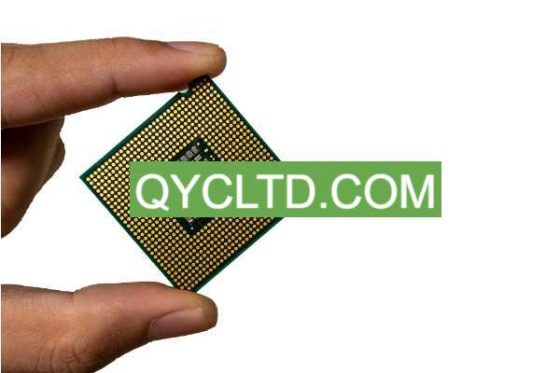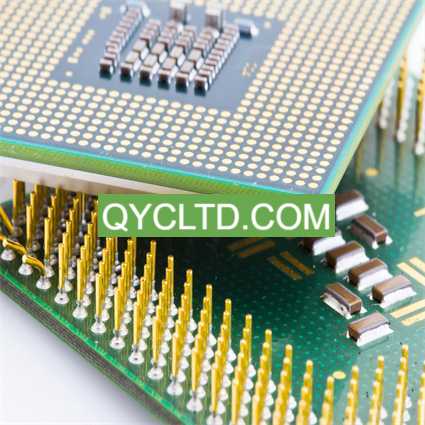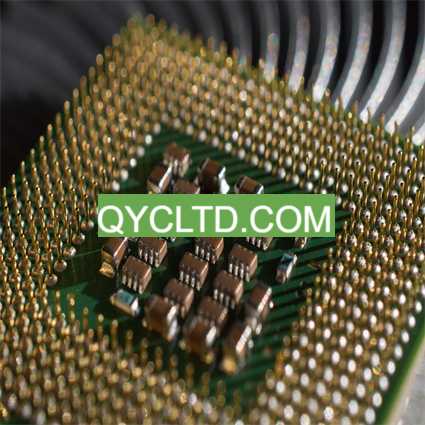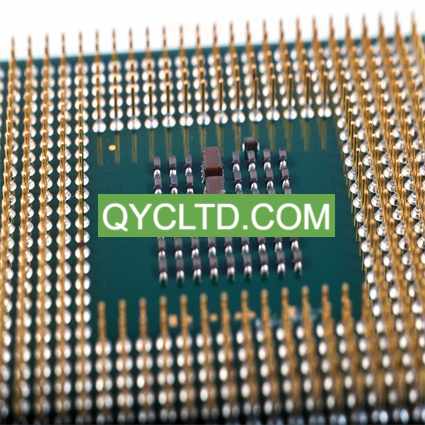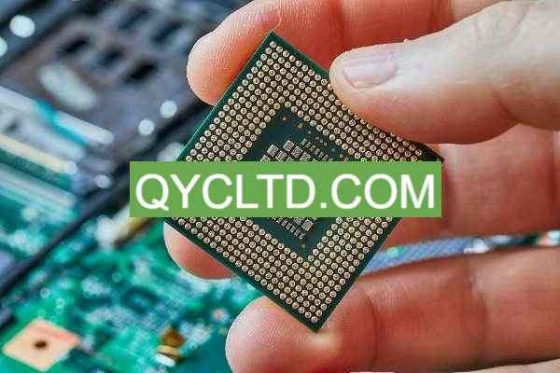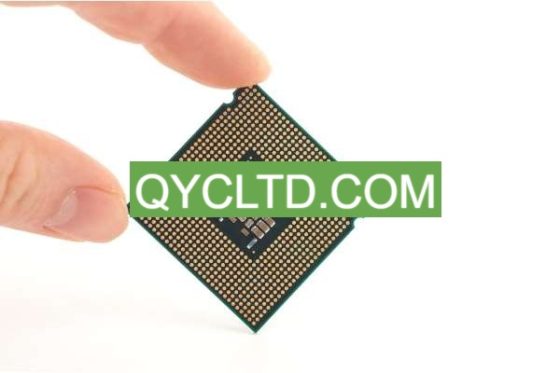What is Ceramic Package Substrate?Ceramic Package Substrate Manufacturer.A Keramik-Gehäuse-Substrat Manufacturer specializes in producing high-performance ceramic substrates used in electronic packaging. These substrates offer excellent thermal conductivity, electrical insulation, und mechanische Stabilität, making them ideal for applications in aerospace, Telekommunikation, und Medizinprodukte. By leveraging advanced manufacturing techniques and stringent quality control, these manufacturers ensure reliable and efficient performance of electronic components in demanding environments. Ceramic Verpackungs-Substrat is a key component used in integrated circuit (ISCH) Verpackung. It is usually made of high-purity ceramic materials such as aluminum oxide (Al2O3) or aluminum nitride (AlN). This substrate has excellent thermal conductivity, mechanical strength and chemical stability, making it ideal for high-performance electronic devices. Ceramic packaging substrates are mainly used to package microchips and integrated circuits by connecting the chips to solder joints or leads on the substrate and providing support and protection. They often have complex multi-layer structures that include metal lines, pads, capacitors and other components to enable functions such as signal transmission, power management and thermal management. Compared with traditional organic packaging substrates, ceramic packaging substrates have higher thermal conductivity and lower thermal expansion coefficient, which allows them to effectively dissipate heat and improve device performance and reliability. Außerdem, they have better dimensional stability and chemical resistance, making them perform better in high temperatures, high humidity and corrosive environments. Insgesamt, ceramic packaging substrates play an important role in the electronics industry, especially in applications that require high performance, high reliability, and environmental resistance, such as aerospace, Fahrzeugelektronik, Kommunikationsgeräte, and industrial control systems. . |
Ceramic Package Substrate design Reference Guide. |
| Ceramic packaging substrate is a key component widely used in electronic equipment, and its design quality directly affects the performance and reliability of electronic equipment. This guide is intended to provide engineers with basic principles and best practices for ceramic packaging substrate design to help them design high-performance, reliable electronic products.
Thermisches Management: Reasonably design the heat dissipation path to ensure that the temperature of the device is controlled within a safe range during operation. Signal integrity: Reduce impedance mismatch and crosstalk in the signal transmission path to ensure the stability and accuracy of signal transmission. Electrical characteristics: Consider electrical characteristics such as power distribution and voltage drop, and rationally lay out power and ground paths to reduce power loss in the circuit. Mechanical strength: Choose appropriate materials and structures according to the application scenario to ensure that the substrate can maintain structural stability and mechanical strength under various environmental conditions. Manufacturing feasibility: Considering the limitations of the manufacturing process, the design is simplified as much as possible to reduce manufacturing costs and improve production efficiency.
|
What material is used in Ceramic Package Substrate? |
| Ceramic packaging substrate is a key material used for packaging and connecting electronic components. It is usually made of aluminum oxide (Al2O3) or alumina ceramic (Alumina Ceramic). This material has excellent thermal conductivity, mechanical strength and chemical stability, making it ideal for high-performance electronic devices.
Alumina ceramic substrates are typically of high purity, and their preparation involves mixing alumina powder with other additives and pressing and sintering to form a strong substrate structure. During the preparation process, the properties of the substrate can be adjusted by adding different additives, such as increasing thermal conductivity or improving mechanical strength. In addition to aluminum oxide, other materials are sometimes used to make ceramic packaging substrates, such as silicon nitride (Silicon Nitride) or zirconium oxide (Zirconia). These materials may offer additional advantages in specific applications, such as higher thermal conductivity or lower dielectric constant. 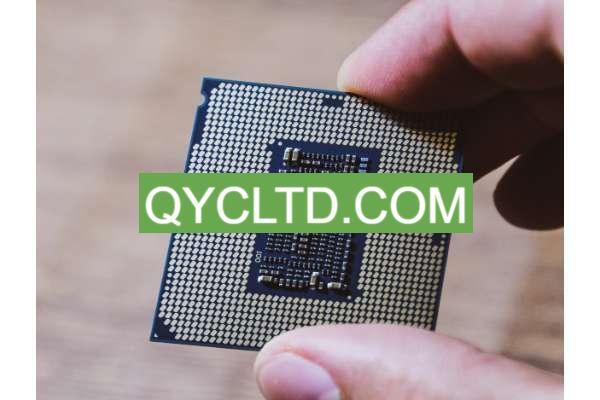 Hersteller von Keramikgehäusesubstraten Im allgemeinen, ceramic packaging substrates are widely used in the electronics industry, especially in applications requiring high performance, high reliability, and high temperature resistance, such as power semiconductor devices, microwave devices, and sensors. |
What size are Ceramic Package Substrate?When it comes to Ceramic Package Substrate sizes, we enter a realm of creativity and customization needs. The flexibility of this packaging technology allows it to be customized according to specific application requirements to meet the packaging needs of various electronic devices. Here are some important things to know about Ceramic Package Substrate dimensions: Ceramic Package Substrate can be customized into a variety of sizes and shapes to accommodate different types and sizes of electronic devices. Whether it is a microchip package or a large power module, it can be customized according to the customer’s specific requirements. This flexibility makes it ideal for packaging a variety of electronic devices. Due to differences in different application scenarios, electronic devices also have different packaging requirements. Ceramic Package Substrate can therefore be personalized to the needs of specific applications. Whether it is size, shape or wiring density, it can be adjusted according to customer requirements to achieve optimal performance and reliability. The diversification and rapid development of the modern electronic equipment market require packaging technology to quickly adapt to changing needs. Ceramic Package Substrate provides flexible solutions that can meet the packaging needs of various application scenarios. Whether it’s consumer electronics, industrial equipment or medical devices, there’s a Ceramic Package Substrate solution for you. Customizing Ceramic Package Substrate requires precise process control and advanced production equipment. During the customization process of size and shape, high-precision processing and assembly need to be ensured to ensure the quality and performance of the final product. Deshalb, strict quality control and inspection procedures are crucial during the manufacturing process to ensure that each product meets customer requirements. Ceramic Package Substrate’s flexible size and customization provide a new solution for the packaging of modern electronic devices. Whether pursuing high performance, high reliability or adapting to rapidly changing market demands, Ceramic Package Substrate can meet customers’ various packaging needs. With the continuous development and innovation of technology, it is believed that Ceramic Package Substrate will play an increasingly important role in the future electronic packaging field. |
The Manufacturing Process of Ceramic Package Substrate.As a new PCB technology, the manufacturing process of Ceramic Package Substrate involves multiple key steps and requires precise process control and advanced equipment to ensure the quality and performance of the final product. The first step in manufacturing Ceramic Package Substrate is choosing the right material. The main materials commonly used include Alumina and Silicon Nitride. These ceramic materials have excellent thermal conductivity, mechanical strength and electrical properties, making them ideal for packaging high-performance electronic devices. After the material selection is completed, the next step is to shape the selected ceramic material. This is typically accomplished through processes such as injection molding or die-cast molding to obtain the desired substrate shape and size. After the molding is completed, the ceramic substrate needs to be sintered. Sintering is to heat the formed ceramic material in a high-temperature environment to achieve a certain hardness and density. This process is very critical and directly affects the mechanical strength and thermal conductivity of the substrate. After sintering is completed, the ceramic substrate needs to be metallized. Metallization is the coating of a layer of metal on the surface of a substrate, usually using conductive metals such as copper or silver. The purpose of metallization is to form conductive paths on the substrate for circuit connection and transmission. After metallization is completed, the next step is printing on the surface of the substrate. Printing is to print circuit patterns and other necessary markings on the surface of a substrate, usually using screen printing or photolithography technology. The last step is welding. In this process, electronic components are connected to metallized areas on the substrate using soldering techniques to form a complete circuit. The quality of welding directly affects the reliability and performance of the entire product. Zusammenfassend, the manufacturing process of Ceramic Package Substrate involves multiple key steps such as material selection, molding, sintering, metallization, printing, and welding. These steps require precise process control and advanced equipment to ensure the quality and performance of the final product. Through continuous technological innovation and process improvement, Ceramic Package Substrate will continue to play its important role in high-performance electronic devices and promote the progress and development of the entire industry. |
The Application area of Ceramic Package Substrate.The widespread application of Ceramic Package Substrate in high-performance electronic devices highlights its importance in communications, automotive, industrial and medical fields. Its excellent performance and reliability make it the packaging solution of choice for a variety of critical applications. In the field of communication equipment, Ceramic Package Substrate carries key communication chips and devices, such as radio frequency modules, antennas, etc. These devices require high-speed data transmission, stable signal transmission and anti-interference capabilities. The excellent properties of ceramic materials can meet these requirements, so they have been widely used in communication base stations, wireless routers, satellite communications and other fields. Im Bereich der Automobilelektronik, Ceramic Package Substrate carries key components such as on-board control units (Steuergeräten), Sensoren, and electric vehicle battery management systems. The automotive working environment is harsh and requires electronic equipment that is resistant to high temperatures, vibrations, and long-term stability. Ceramic packaging substrates are favored because of their excellent mechanical strength and stability. Im Bereich der industriellen Steuerung, Ceramic Package Substrate is widely used in various industrial automation equipment, robot control systems, Sensoren, etc. Equipment in industrial environments often requires long-term stable operation, and the durability and reliability of ceramic materials make them an ideal packaging choice. In the field of medical devices, Ceramic Package Substrate is used for the packaging of key components such as medical diagnostic equipment and implantable medical devices. Medical equipment has extremely high requirements on the safety, stability and reliability of packaging materials, and ceramic packaging substrates are the choice to meet these requirements. Insgesamt, the wide range of applications of Ceramic Package Substrate in communications, automotive, industrial and medical fields highlights its importance in high-performance electronic devices. Its excellent performance and reliability provide stable and reliable packaging solutions for various key applications, making important contributions to the development of modern technology. |
What are the advantages of Ceramic Package Substrate?Compared with traditional fiberglass substrates, Ceramic Package Substrate has demonstrated significant advantages in many aspects. The following is an expansion of its advantages: Ceramic Package Substrate is based on a ceramic material that conducts heat far better than traditional fiberglass substrates. This advantage allows the device to dissipate heat more effectively when operating at high power, reduces the impact of temperature on the performance of electronic components, and improves the stability and reliability of the entire circuit. Ceramic materials have excellent mechanical strength. In contrast, fiberglass substrates may be brittle in some cases. Ceramic Package Substrate can better resist external shock and vibration, thereby reducing the risk of damage that may occur during manufacturing, transportation and use, and extending the service life of electronic products. Ceramic materials have excellent electrical properties such as low dielectric constant and low loss tangent. These characteristics allow Ceramic Package Substrate to perform better in high-frequency and high-speed circuits, reduce signal attenuation and crosstalk in signal transmission, and improve the signal integrity of the circuit. Greater material uniformity and stability during the Ceramic Package Substrate manufacturing process means less performance variation between produced devices. Außerdem, the ceramic material itself has excellent properties such as high temperature resistance and chemical corrosion resistance, allowing the device to work stably and reliably in various harsh environments. Because Ceramic Package Substrate has excellent mechanical strength and electrical properties, higher integration and smaller package sizes can be achieved. This allows electronic product designers to implement more functions and more complex circuits in a limited space, thereby meeting the needs of modern electronic equipment for compact and lightweight design. Zusammenfassend, Ceramic Package Substrate has shown obvious advantages in terms of thermal conductivity, mechanical strength, electrical properties, reliability, stability and packaging integration, providing a powerful tool for improving the performance and reducing the size of electronic products. support. With the continuous advancement of technology and the expansion of application fields, Ceramic Package Substrate will surely play an increasingly important role in the future electronic packaging field. |
FAQSWhat is a Ceramic Package Substrate?A Ceramic Package Substrate refers to a specialized type of substrate used in electronic packaging. It is made from ceramic materials and provides a stable base for mounting and interconnecting electronic components such as integrated circuits. What are the advantages of Ceramic Package Substrates?Ceramic Package Substrates offer several advantages, including high thermal conductivity, excellent dimensional stability, and good electrical insulation properties. They also exhibit superior mechanical strength compared to organic substrates. What are the common applications of Ceramic Package Substrates?Ceramic Package Substrates are commonly used in high-performance electronic devices such as microprocessors, memory modules, and power semiconductor devices. They are also employed in aerospace, automotive, and telecommunications industries due to their reliability and robustness. How are Ceramic Package Substrates manufactured?Ceramic Package Substrates are typically manufactured through processes such as tape casting, screen printing, and firing. The ceramic material is first formed into a thin sheet, onto which conductive traces and vias are patterned using specialized techniques. The substrate is then fired at high temperatures to achieve the desired properties. |
 Hersteller von Halbleitergehäusesubstraten
Hersteller von Halbleitergehäusesubstraten

